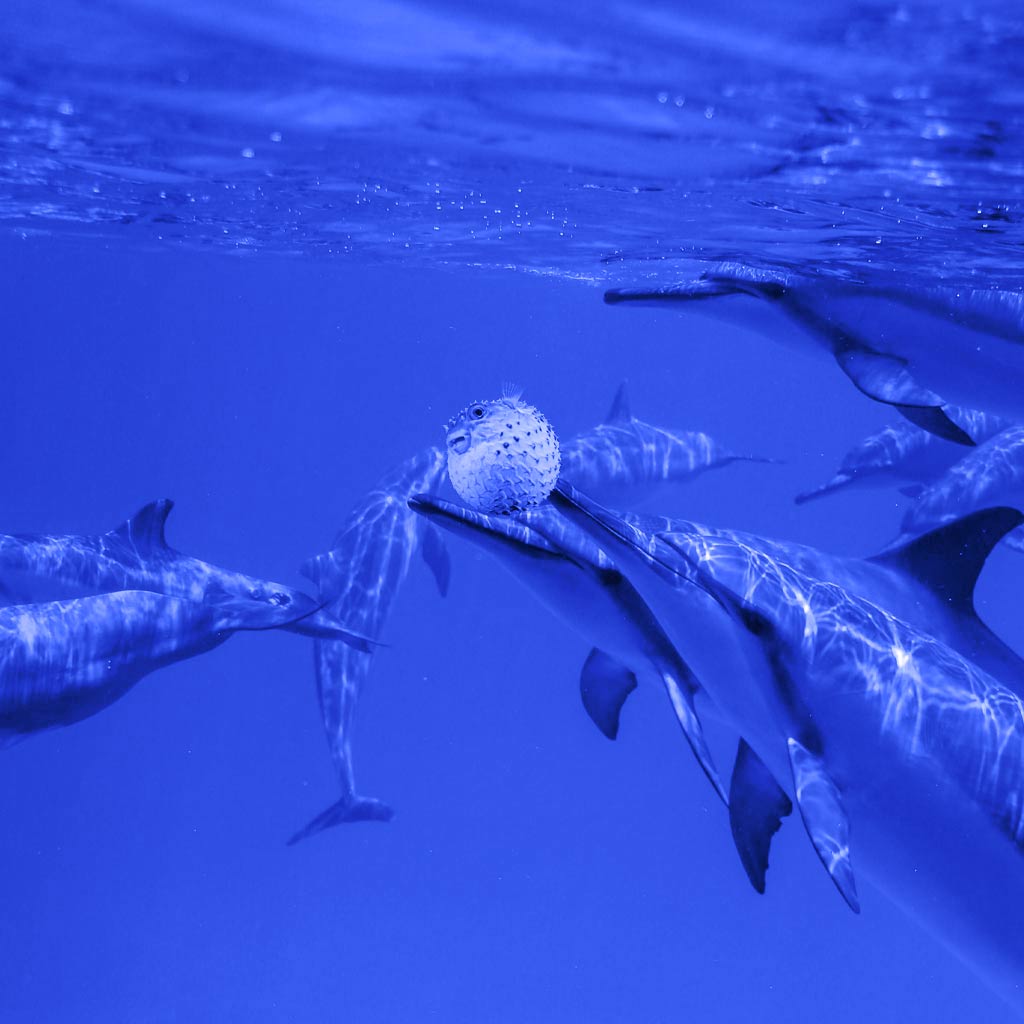Why do Dolphins play with the PufferFish?

Short Answer: The playful interaction between dolphins and pufferfish may stem from a combination of curiosity, social bonding, and potential learning opportunities.
Renowned for their intelligence and playful demeanor, dolphins have been observed engaging in fascinating behaviors, one of which is playing with pufferfish. This intriguing behavior has intrigued researchers and animal behaviorists for years. One possible explanation for dolphins’ interaction with pufferfish is their curiosity and the desire for stimulation. Pufferfish have unique features, such as their ability to inflate themselves into a spiky ball when threatened. This novelty may attract dolphins and spark their interest, leading them to interact with these fascinating creatures.
Another possible reason for dolphins playing with pufferfish is their use as a form of playtime and social interaction. Dolphins are highly social animals, and they engage in various playful activities to bond with one another. Playing with pufferfish could serve as a recreational activity, enabling dolphins to strengthen social bonds within their pod. The playful interaction may involve tossing or pushing the pufferfish gently, providing both physical and mental stimulation for the dolphins.
Additionally, some researchers speculate that dolphins’ interaction with pufferfish may have a practical purpose. Pufferfish are known to produce a toxin called tetrodotoxin, which can be lethal to most predators. However, dolphins have been observed carefully handling pufferfish without triggering their defensive response. It is possible that dolphins have learned to use their skills and intelligence to manipulate the pufferfish in a way that avoids the release of toxins. By practicing these interactions, dolphins may be acquiring valuable knowledge and honing their hunting techniques
What chemical do pufferfish release when attacked by dolphins?
Pufferfish contain a potent neurotoxin called tetrodotoxin, which is highly toxic to most animals, including dolphins. Ingesting or coming into contact with tetrodotoxin can be lethal. Dolphins are aware of the dangers associated with pufferfish and have been observed engaging with them cautiously, often avoiding direct ingestion or contact with the toxin. While dolphins may interact with pufferfish, it is not for the purpose of getting high but rather for play, exploration, or potentially learning about their defensive mechanisms.
Can you eat Pufferfish?
Pufferfish, also known as fugu, can be eaten, but it comes with considerable risks. Certain species of pufferfish contain the aforementioned neurotoxin called tetrodotoxin, which can be deadly if consumed in sufficient quantities. However, in countries like Japan, where pufferfish is considered a delicacy, specially trained and licensed chefs carefully prepare it, removing the toxic organs and ensuring that only safe parts are served. Despite these precautions, consuming pufferfish still carries a level of risk, and it is important to entrust its preparation to skilled professionals who have expertise in handling and preparing this potentially dangerous delicacy.
In conclusion, the playful interaction between dolphins and pufferfish may stem from a combination of curiosity, social bonding, and potential learning opportunities. While the exact reasons behind this behavior may still be a subject of ongoing research, it is clear that dolphins find the presence of pufferfish intriguing and engaging. The playful interactions serve as a testament to the remarkable intelligence and adaptability of these marine mammals.






